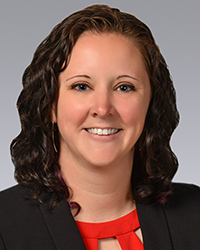News:
Northern New England
Posted: September 5, 2008
For valuation of commercial RE the challenge has been to find recent investment property sales
The change of the high-yield mortgage market continues to have an effect on residential development in northern New England. What is apparent is that some of the lending paradigms have been changing with positive levering for increased cash on cash returns no longer possible.
For evaluation of residential properties, land remains the most challenging assignment. With the overhang of inventory of existing units, there is simply no demand for additional new construction excepting for certain niche markets. The "over 55" market niche played out long ago as did the larger single-family home market. Excepting the "affordable" market, supply remains very plentiful. And given increasing costs of materials, it is possible that this affordable niche will be met simply by the declining prices of existing inventory.
For commercial real estate, the challenge has been to find any recent investment sales for office, retail or industrial properties. With this lack of recent and relevant sales, confirmation of any type of price increases or declines to date for 2008 is difficult to prove. New construction were never at a high rate, especially when compared to the early 1990s boom, and employment remains at high levels. These factors serve to keep demand for most product types at stable levels.
With the lack of conduit sources for lending, area banks are able to compete for more type of loans. There have been a number of new banks that have been established over the past three years and many of them remain active in the commercial real estate market. However, "non-recourse lending" and "95% loan to value" are not used very often. There remains a number of potential buyers for many investment property types. Owners that did not over-leverage their properties over the past decade are sitting on substantial gains and have comfortable debt loads. With current value trends, these properties remain on the market but at inflated prices and will likely remain available until realistic pricing levels are reached.
Owner-users remain interested in developing buildings for their own use. Especially in more rural northern New England markets, the costs to construct is higher than in more urban areas yet demand for the properties, if vacant and available, would be lower. Valuation of such properties in today's economy remains a challenge.
For investors, the properties that are in demand remain those properties that have been leased and that are at stabilized occupancy. Investors remain much less interested in office and R&D properties that have substantial vacancies. Well-located retail space, regardless of its occupancy level, continues to see high demand from both potential owner-users and from investors. It will be interesting to see over the next 12 months if the shake-out in the casual dining trade will have an effect on demand and construction of retail space.
When our firm is asked to appraise a larger office, R&D or industrial building, the greatest challenge is finding recent and relevant rent comparables. When appraising a 100,000+ s/f building, the usefulness of the many 1,000-2,000 s/f new leases and renewals that are available are of little relevance. Many of the larger lease transactions that have occurred take place after an investor has purchased a property for well-below replacement costs.
An additional challenge for appraising are the owners of multiple buildings that switch tenants between buildings. The owner will state that they achieved a certain rent level and exclude from telling you that they allowed the tenant to downsize by 50% and forgave 6 months of back rent.
Of course, the main question from clients, as it has always been, remains, "What kind of cap rate are you seeing?" The condominium conversion market for apartments no longer exists and the many small investors that were burned in their purchases because they were counting on continued appreciation, are gone. Yet there remains multiple potential buyers for deals that pass the smell test. Capitalization rates in the 7-8% are still most often achieved.
For retail and well-located and occupied office and other commercial properties, capitalization rates in the 7-8% range are still most often achieved. The number of commercial properties with substantial vacancies that we have been asked to appraise in the past six months is very limited. The capitalization rates for these buildings appears to remain in the 10%+ range unless the purchase is by a partial owner-user.
Construction costs remain at a high level and there has been some cost cutting for new construction by area builders saying that they need the work. However, increasing raw material prices eat up any of these savings.
Investors in commercial real estate also have long memories. There remains multiple potential buyers that still rue the day they were unable to pull the trigger on some real estate transaction that the FDIC, Bonham or Recoll had available in the early 1990s. Cash remains on the sideline until additional decreases in values are seen.
Jonathan Frank, MAI, is founder/president of F&M Appraisal Group, Inc., Milford, N.H.
MORE FROM Northern New England
Biddeford, ME Reveler Development has begun construction on 10 Upper Falls Rd., the fourth and final phase of Reveler’s master-planned development in downtown,The Levee. “We’re thrilled to embark on this major milestone at The Levee,” said John Laliberte, CEO of Reveler






 (1) (1).png)





.png)


.png)